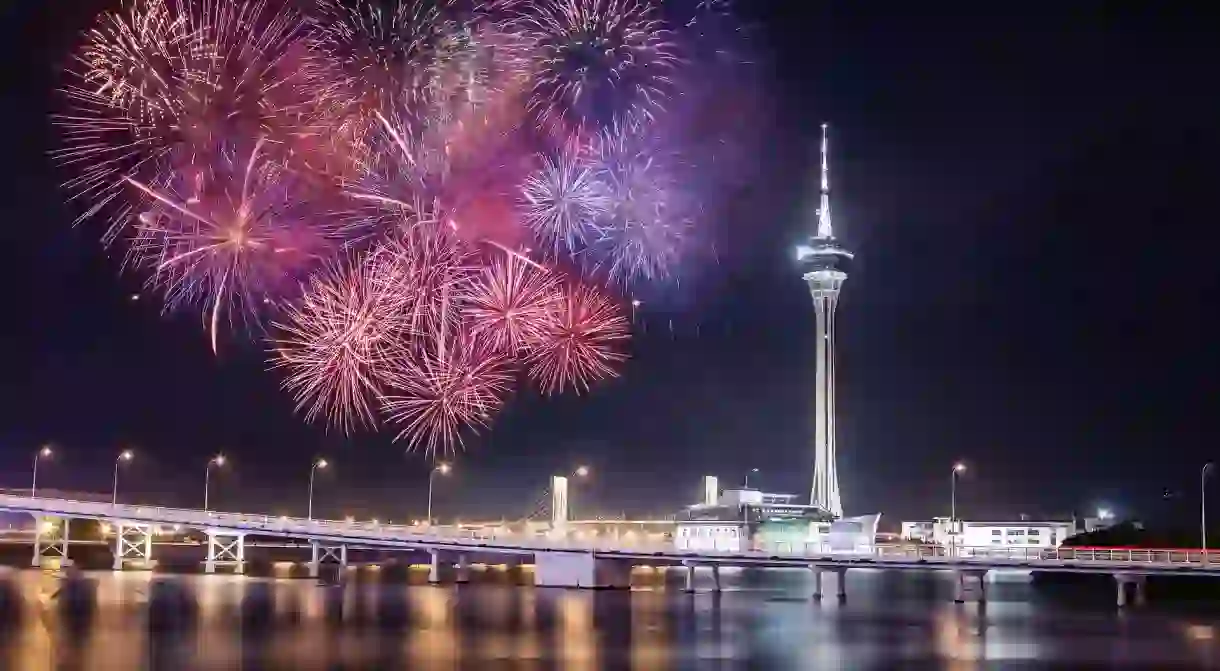A Brief History of Fireworks in Macau

The annual Macau International Fireworks Display Contest is, today, one of the most acclaimed and popular fireworks competitions in the world. However, little has been written about Macau’s ties with the fireworks industry, yet it forms an important and impressive part of its history, given that, for a large part of the 20th century, Macau used to be the world’s largest exporter of firecrackers.
Today, Macau is known for its giant gambling industry that regularly generates six times as much in annual revenue than its closest rival, Las Vegas. But before Macau’s casino boom started in the 1970s, the backbone industry of the ’50s and ’60s in Macau was the labour-intensive firecracker-making trade.
To better understand the scale of the firecracker industry in Macau during its prime, the biggest of six firecracker manufacturers in the Taipa area of Macau was called Kwong Hing Tai. At its peak, the factory employed more than one-third of the total population and produced a staggering three million firecrackers a day.

The history of China and fireworks is believed to date back some 2,000 years. In fact, it was in China that fireworks are said to have originated. Legend goes that fireworks were invented by accident by a Chinese cook who happened to mix charcoal, sulphur and saltpeter (all commonly found in the kitchen in those days). The mixture burned and when compressed in an enclosure (a bamboo tube), the mixture exploded.
But for Macau, the firecracker industry didn’t really rise to prominence until the 19th century. Initially, businessmen used Macau as a port for firecracker exports and had trading agents in the city before they later began to build firecracker plants there.
At its height, Macau boasted seven firecracker factories, and they became the top source of local employment. Meagre wages from making firecrackers fed mouths and offered hope to the destitute, some of whom had just escaped from the brutal uncertainty of a newly installed Communist regime in the mainland. However, Macau’s firecracker industry boomed, and miniature explosives – known as “Fabreco en Macao” – soon became the must-have ingredients for all Chinese festivals the world over.

Making firecrackers in Macau began to take a backseat in the late ’70s. Wage earners left in droves to seek better paid jobs and a safer working environment in the textile and toy-making industries. Mainland China, too, was emerging as the new firecracker powerhouse.
Today, little of Macau’s firecracker heritage is preserved. However, in the area of Taipa Village, the Iec Long Firecracker Factory still stands. This factory operated from 1926 until its closure in 1984, and is the best preserved industrial heritage site in Macau.
Similarly, The Macau Museum offers an exhibit showcasing the tools of the firecracker trade and offers visitors a glimpse of the environment where they were made. The exhibits also includes some of the many colourful firecracker packaging covers produced in Macau.
In a bid to strengthen Macau’s position as a travel destination, in the late ’80s the Macau tourism board turned to its firecracker history as inspiration to launch its annual Macau International Firework Display Contest.

Now, almost 30 years later, the showcase offers a visual feast of ten programmes over the space of five days and is universally acclaimed as one of the world’s best fireworks competitions.
Over the years, more than 100 professional international display teams have taken part in this amazing competition. Each year, in the months of September and October, both visitors and locals flock to the waterfront next to the Macau Tower to see Macau’s skyline light up with bursts of vibrant colour. It’s an event not to be missed, one that is not only a popular annual event, but a fitting tribute to one of Macau’s most successful traditional industries.













